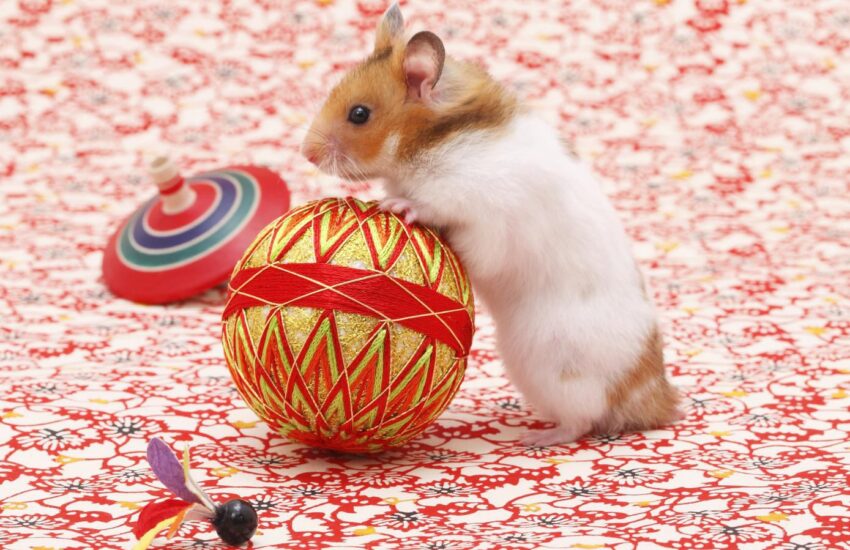Creating Safe Hamster Toys
Hamsters, being active and curious creatures, need a variety of toys to keep them entertained and stimulated. However, ensuring that these toys are safe is crucial for their health and well-being. This article explores how to create safe hamster toys that will not only provide fun and excitement for your furry friend but will also ensure they are free from hazards.
Why Safety Matters in Hamster Toys
When it comes to your pets, safety should always be a top priority. **Hamster toys** can often contain hazardous materials or design flaws that put your pet at risk. Hamsters are prone to chewing on inedible objects, and toys made from unsafe materials can lead to gastrointestinal blockages, poisoning, or even injury. The goal is to create toys from safe, non-toxic materials that not only promote play but also support their natural behaviors, such as chewing, digging, and climbing. Always consider the size, material, and structure of any toy you provide—ensuring these factors align with your hamster’s specific needs is essential for their happiness and health.
Common Materials to Avoid
When crafting or choosing toys for your hamster, it is crucial to avoid certain materials. Plastics that aren’t labeled as pet-safe can release toxins and may break into sharp pieces. Other materials, like wood that hasn’t been properly treated or is chemically treated, can harm your pet. Additionally, avoid small parts that can easily be chewed off and ingested, leading to choking hazards or internal injuries.
Safe Alternatives for Toy Creation
Fortunately, there are plenty of pet-safe materials available that you can use to create engaging toys for your hamster. Natural untreated wood, cardboard, paper, and metal wire can all be excellent choices. For instance, cardboard tubes or boxes can be turned into fun hideouts and tunnels. You can also use natural wood branches that are known to be safe for hamsters, such as apple or willow, as chew toys or climbing structures. When constructing your toys, ensure all parts are securely attached and free from sharp edges to minimize risk.

DIY Hamster Toy Ideas
Creating your hamster toys can be a fun and rewarding experience. Not only will it ensure that the toys are safe for your pet, but you’ll also save money while providing unique playing options for your furry friend. Here are a few simple DIY ideas that you can implement at home:
Cardboard Tube Maze
Use empty toilet paper or paper towel rolls to create a maze for your hamster. Cut the tubes to various lengths and use tape to assemble them in a fun, twisty formation. You can attach them vertically or horizontally, making a mixed multi-level maze. This allows your hamster to explore, play, and exercise, mimicking their natural instinct to scurry through tunnels.
Wooden Chew Toys
Gather natural wooden sticks, ensuring they come from non-toxic trees. Simply cut the wood into small pieces and use non-toxic glue to create designs, or leave them as standalone chew toys. Hamsters love to gnaw on wood, which also helps keep their teeth healthy. Regularly inspect and replace these toys, as worn-out wood can pose a risk as well.

Hide and Seek Boxes
Cardboard boxes can be easily transformed into fun hide-and-seek areas. Cut openings in an empty box for your hamster to jump in and out of. You can fill the box with shredded paper or hay for added comfort and stimulation. This not only provides a hiding spot but engages your hamster’s instincts to burrow and nest.
Additional Tips for Safe Hamster Playtime
Creating safe hamster toys is just one component of ensuring your pet’s well-being. It’s also essential to monitor their playtime to prevent injuries. Always observe how your hamster interacts with new toys to ensure they are safe and suitable for them. Here are a few extra tips:
Routine Checks
Make it a habit to check your hamster’s toys regularly for wear and tear. Discard any toy that shows signs of breaking apart or is negatively impacting your hamster’s health. This will help keep their play environment safe and enjoyable.
Variety is Key
Just like humans, hamsters can get bored with the same toys. Rotate the toys regularly to keep things fresh and exciting. Introducing new textures, scents, and challenges can help spur your hamster’s interest and encourage natural behavior.
Consulting a Veterinarian
If you’re ever unsure about what materials are safe for your hamster, consult your veterinarian. They can offer guidance and insight into safe practice, ensuring your furry companion stays healthy while playing. Additionally, specific breed characteristics may require special consideration when choosing toys.
Key Takeaways
- Use only safe, non-toxic materials to create toys for your hamster.
- Implement stimulating DIY projects like cardboard mazes and chew toys for fun exercise.
- Regularly monitor toys for safety and seek advice from veterinarians if you have any concerns.
FAQ
1. What materials are safe for hamster toys?
Safe materials for hamster toys include natural, untreated wood, cardboard, and non-toxic fabrics. Always ensure any products you use are explicitly labeled as safe for pets to avoid hazardous materials or treatments.
2. How often should I replace my hamster’s toys?
It is advisable to inspect and replace hamster toys every few weeks. Any toys showing signs of wear and tear, such as fraying or splintering, should be replaced immediately to prevent injury.
3. Can hamsters chew on cardboard?
Yes, hamsters can safely chew on cardboard, making it a great material for toys. Ensure the cardboard is free from dyes and chemicals to maintain its safety.
4. How do I keep my hamster engaged with toys?
Rotate toys regularly and introduce different types of toys that require different actions, such as climbing, chewing, or burrowing. This diversity keeps your hamster mentally stimulated and physically active.
5. Are commercial hamster toys safe?
Some commercial hamster toys are safe, but many contain unsatisfactory materials. Always check labeling, reviews, and safety certifications when buying commercial toys for your hamster to ensure their safety.
